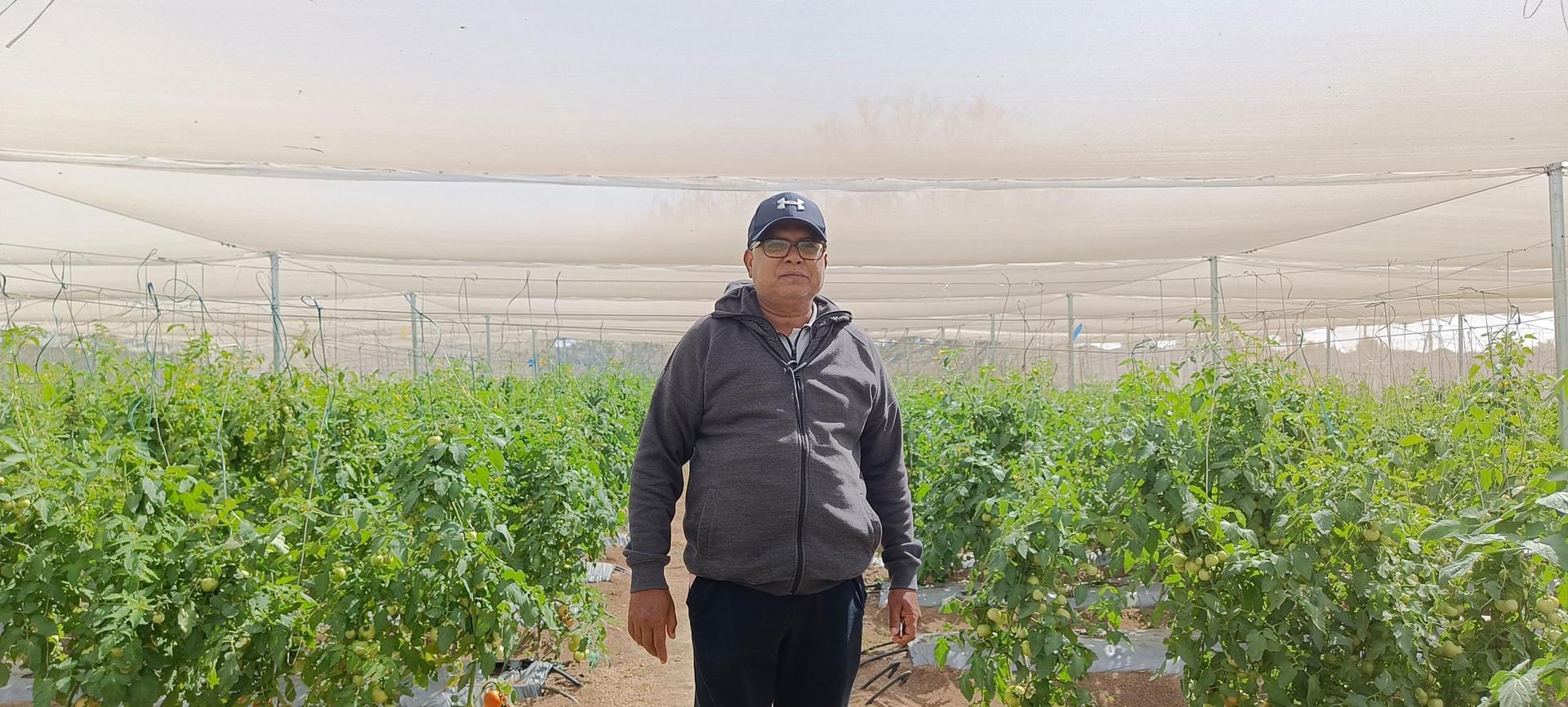On a hot, windy afternoon in January, Syed Sajjad Ali showed off bunches of juicy, greenish-red tomatoes hanging on rows and rows of vines on his farm in the southern Indian state of Telangana.
The crops are housed inside a covered structure made of sheer, white material.
“This is protected from the sun, protected from the rain, protected from the insects,” Ali, 60, said, standing beneath the white fabric roof which stretched just a few feet above his head.
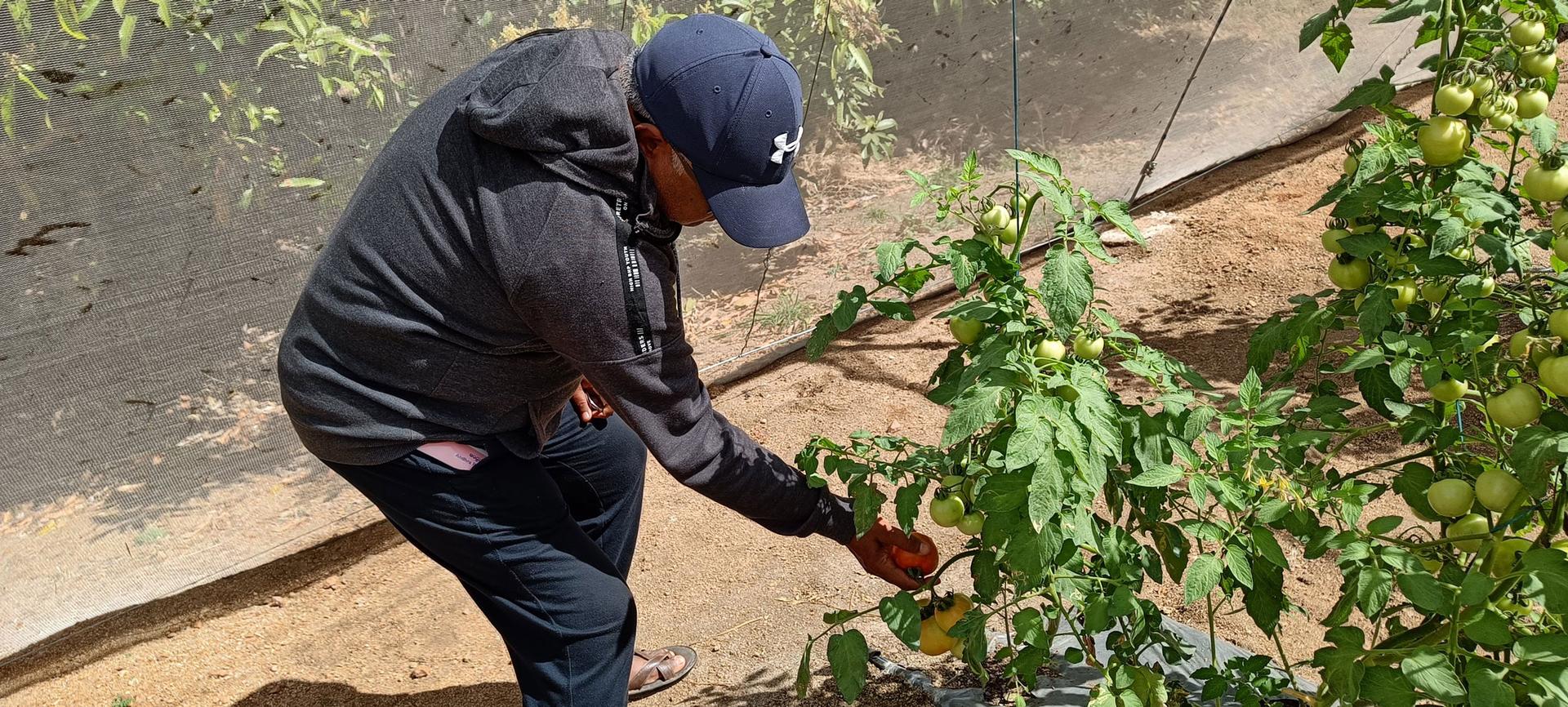
The crops are planted on a small patch of land about 1/8 of an acre. In India, the average farm size is 3 acres compared to 445 acres in the United States. The vast majority of farmers in India — and worldwide — are small farmers. They own less than 5 acres of land but grow 1/3 of all agricultural produce.
Small farms are also most vulnerable to climate change. The structure covering Ali’s tomatoes, known as a “greenhouse-in-a-box,” is part of a solution designed to help them cope with the vagaries of a changing climate. The design, essentially a low-cost, scaled-down version of a standard greenhouse, is the brainchild of an Indian startup called Kheyti.
In 2022, it was among the winners of the annual Earthshot Prize that honors environmental solutions. The idea was conceived some 10 years ago when Kheyti’s co-founders were trying to figure out what Indian farmers were struggling with the most.
“We started talking to hundreds of farmers across the country, and all of them said something that was related to climate change,,” said Khetyi co-founder Saumya, who goes by one name.
Across the globe, summers are getting hotter and rainfall is growing less predictable. As the globe warms, storms are expected to grow more intense.
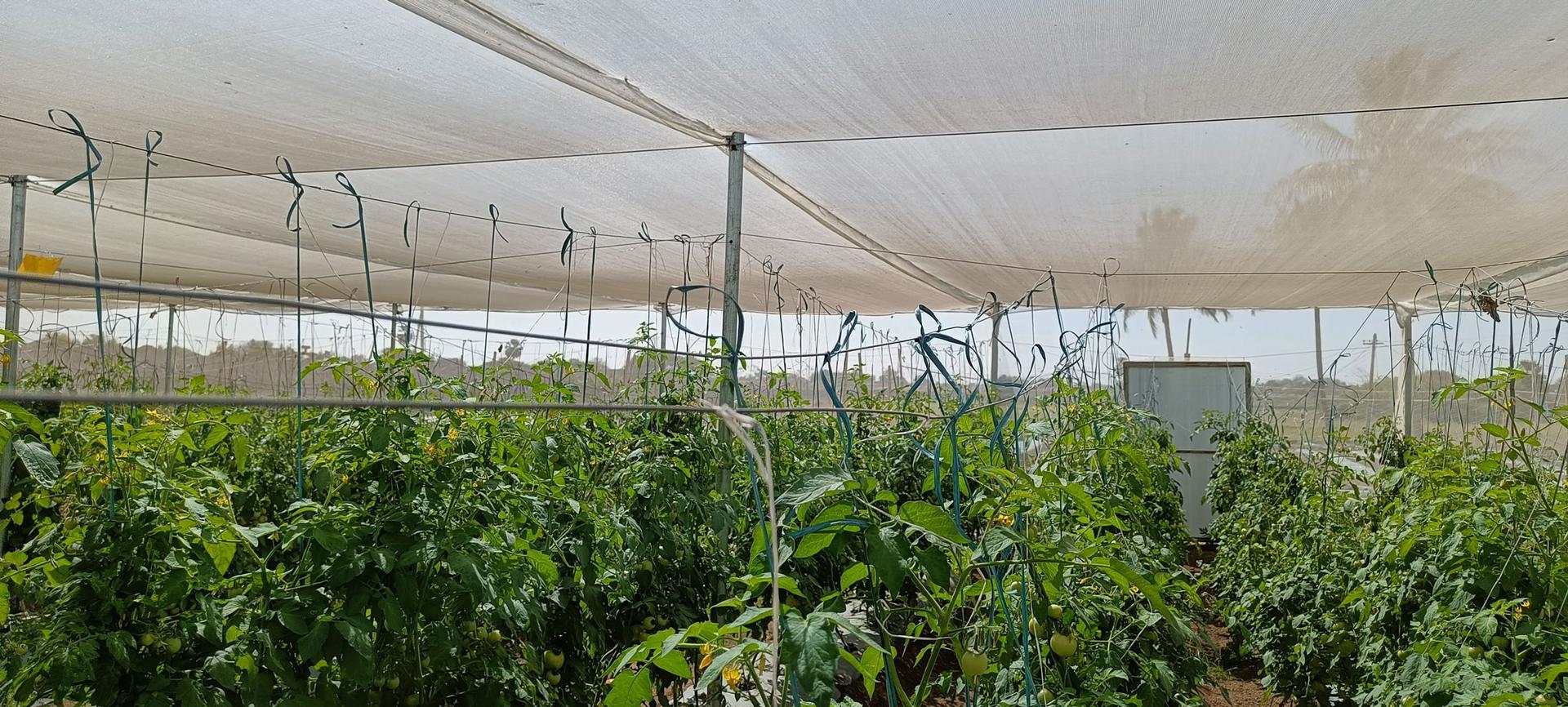
To help Indian farmers become more resilient to this less predictable weather, Saumya and her fellow co-founders brainstormed a lot of different ideas.
“We looked at a bunch of things. We looked at insurance, we looked at different seeds. We also came across the greenhouse, which had been around for many centuries,” Saumya said.
Greenhouses help crops grow more efficiently by maintaining a controlled temperature and humid environment. They also protect crops from pests and unpredictable weather. But in India, it’s mostly wealthy farmers who can afford greenhouses. They also don’t come in compact sizes, which would be suitable for India’s majority smallholder farmers.
Saumya and her colleagues set out to design a much smaller, more affordable greenhouse by getting rid of the extra features that come with standard greenhouses, like height. Greenhouses typically are very tall and reinforced with a lot of steel.
“So, it was kind of like that whole negotiation where we said, OK, what is the bare minimum, covered structure that we can make? That was the approach,” Saumya said.
Along with the greenhouse, Kheyti also provides farmers with seeds, fertilizers, drip irrigation systems and installation help.
“Small farmers don’t have market access. They don’t know what inputs to buy,” Saumya said.
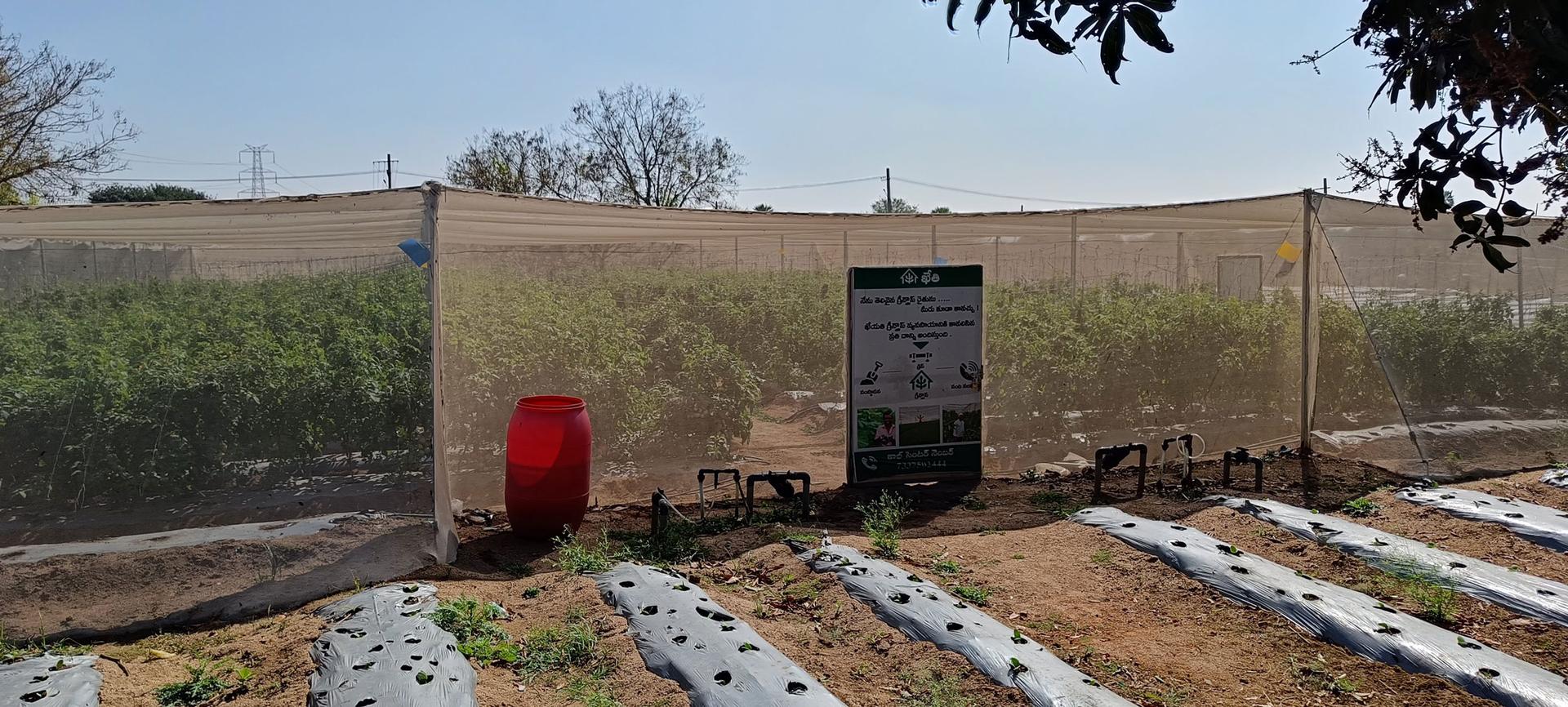
Kheyti’s experts keep track of the crops’ status remotely by asking farmers to share regular photos on WhatsApp and advise and train farmers accordingly. The services, bundled with the product, make up the greenhouse-in-a-box, Saumya explained.
But convincing farmers to come on board can sometimes be difficult, she said.
“There’s a lot of mistrust that farmers have toward companies who sell products and then run away,” she said.
Financing is another challenge.
“Banks don’t really want to give small-farmer loans because they have no or low credit scores,” she said.
Farmers will save up money to buy a cow or buffalo but are much more skeptical about any new product.
But Saumya is optimistic. She said Kheyti’s greenhouse is in a similar position to where the tractor was about five decades ago.
“It took around 40 years until [the tractor] became mainstream in India. The greenhouse is also a similar sort of an asset, it’s expensive, and it takes some time to see the return and get used to it,” she said.
So far, about 1,000 farmers across India have signed up for Kheyti’s greenhouse.
Ali got his greenhouse seven months ago and he said he is already seeing the results.
“The size of tomato and the quality of tomato is much better than [those grown in the] open field. Buyers very quickly take my tomatoes because they like this one,” Ali said.
A few miles down the road from Ali’s farm, Renuka, who goes by one name, planted tomatoes in an open patch, not in a greenhouse. Her tomatoes are smaller and haven’t had many takers, she said.
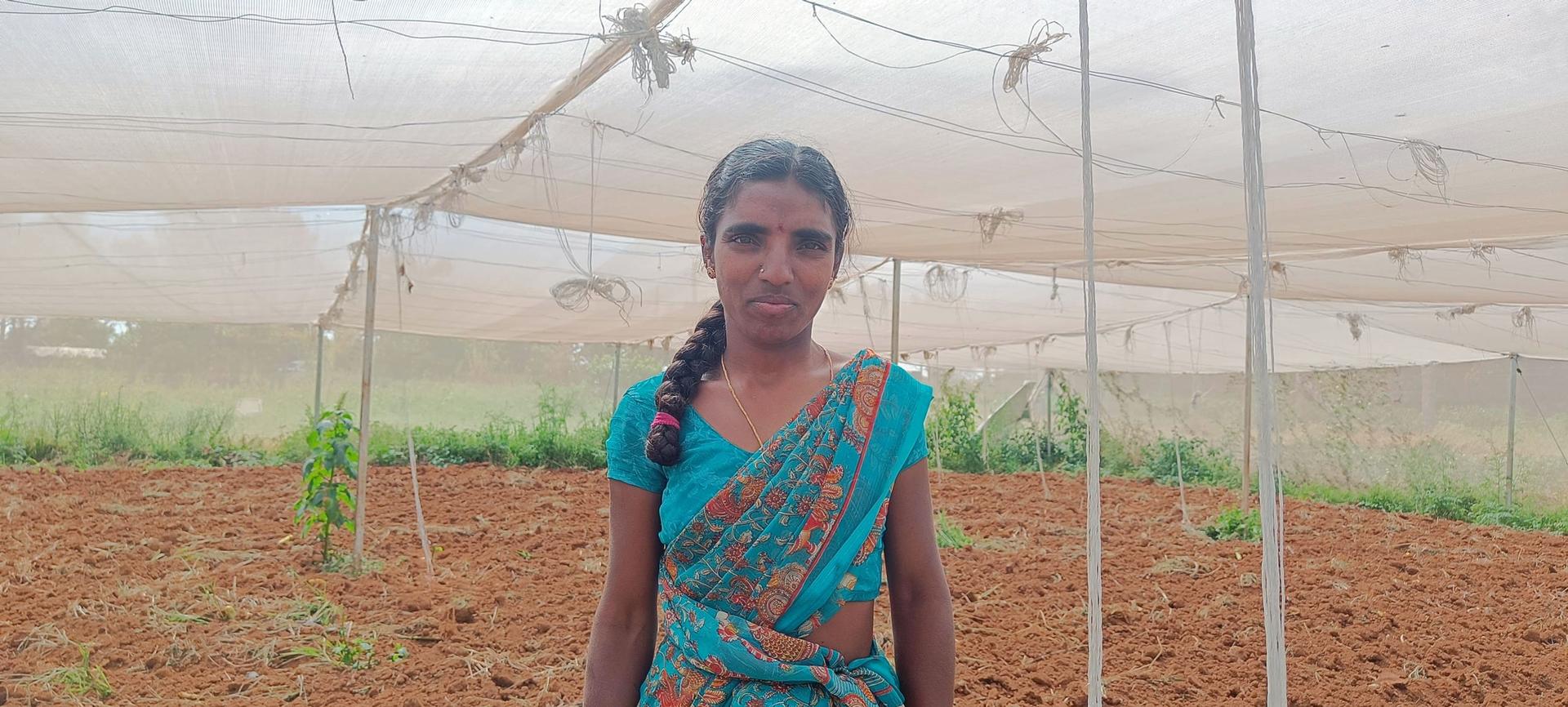
For several weeks now, the going rate for tomatoes at her local village market has been a paltry 5 rupees, or around 6 cents, per kilo, she said. Factoring in transport and labor costs, she figures she will make a loss selling at those prices, so she was not even going to bother harvesting them.
Anguished, she’s decided to leave them in the field to rot.
“Water wasted, fertilizer wasted, seedlings wasted. I get angry when I look at this,” she said.
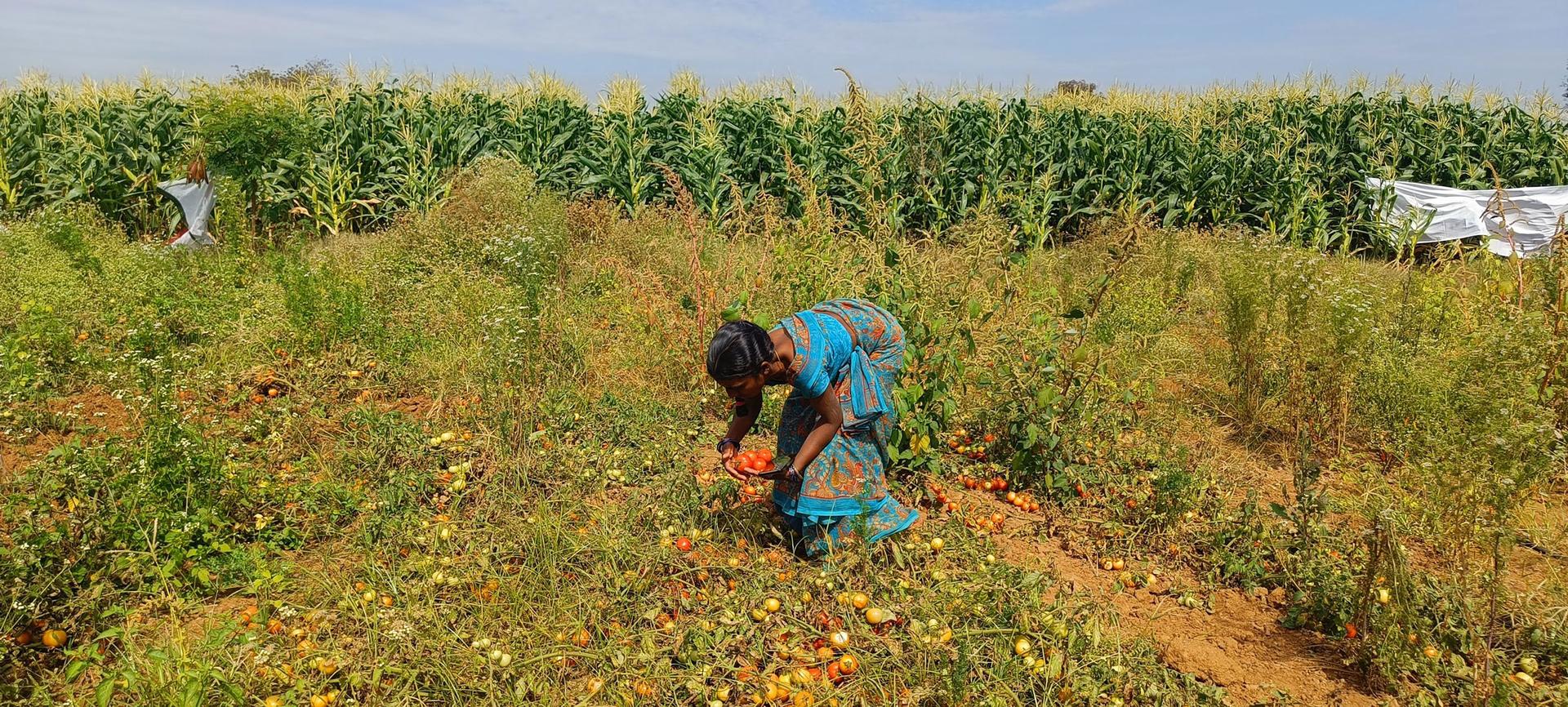
Kheyti’s greenhouse can help farmers get higher prices by allowing them to grow in the off-season when most people are not growing and the supply is low.
“For off-season, it will work like a wonder because you can rely on higher prices, your economic viability will be more,” said Anjani Kumar, a senior research fellow at the International Food Policy Research Institute in Delhi. “We need more and more greenhouses there is no doubt about it.”
The greenhouse can also help by allowing farmers to grow vegetables that are not commonly grown in the region. That’s exactly what Renuka did a few months ago — she pooled her savings to buy a Kheyti greenhouse for about $600 and planted cucumbers.
It is too hot to grow cucumbers in the open, she said, but in the greenhouse, she got a pretty good harvest. Cucumbers sell for higher prices than the vegetables she usually grows and over two crop cycles, she said, she’s almost recovered her investment.
She hopes to make her first profit soon.
The small greenhouse is a good idea, Kumar said, but there are some limitations. It is only suitable for farmers who grow fruits and vegetables, he said. Farmers who grow other crops may have to take up poultry or livestock to supplement their incomes.
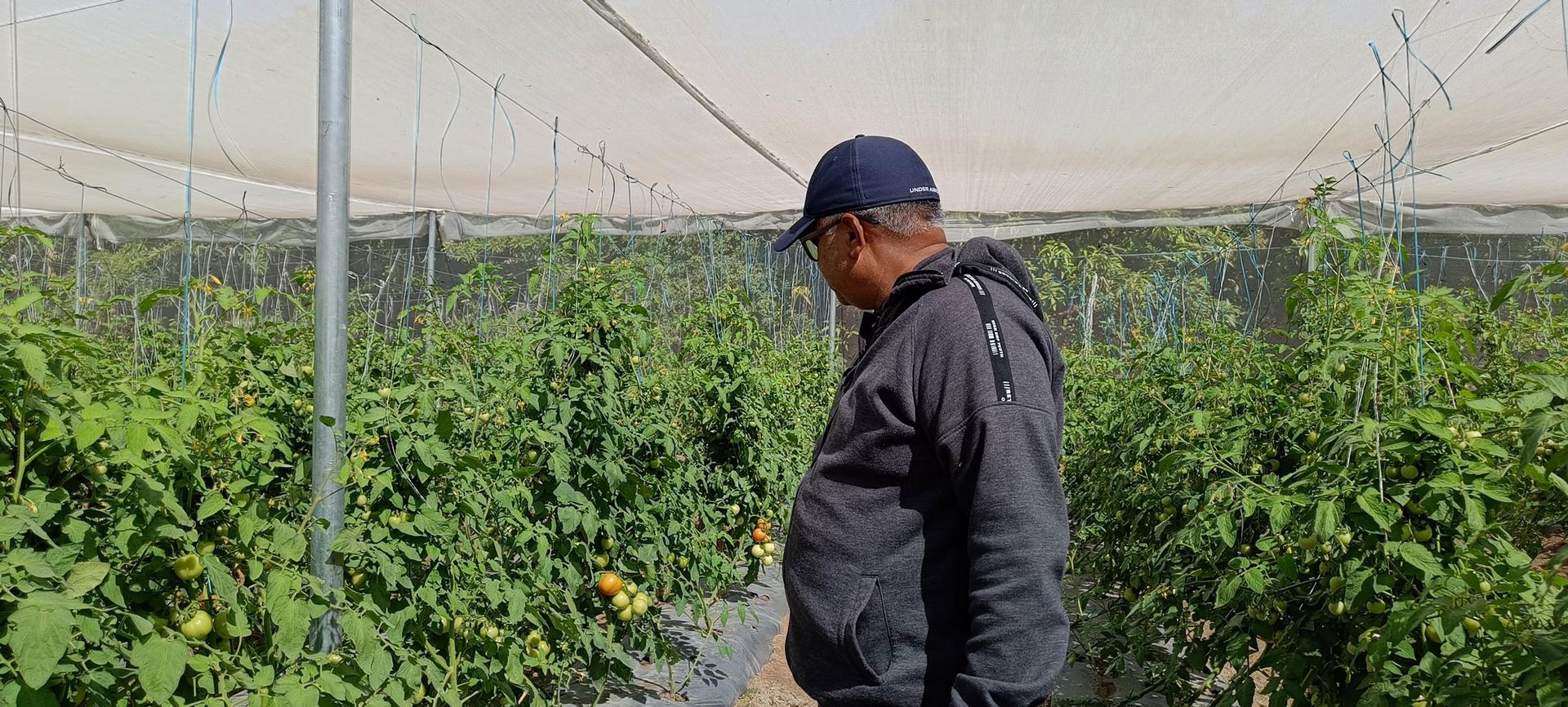
As the climate changes, the government should also promote professions other than agriculture in rural areas, he said.
“So, that they can work on the farm, they can work off the farm and combined they can have better income.”
Whatever the solution, Kumar said government policies must take into consideration the needs of smallholder farmers.
“The bulk of the production and bulk of the cultivated area comes from the smallholders,” he said. “They are going to be the most significant part for the foreseeable future for Indian agriculture.”
And Kheyti wants to help these smallholders become climate smart. Over the next couple of years, the startup plans to get its greenhouses to 10,000 farmers.
The World is an independent newsroom. We’re not funded by billionaires; instead, we rely on readers and listeners like you. As a listener, you’re a crucial part of our team and our global community. Your support is vital to running our nonprofit newsroom, and we can’t do this work without you. Will you support The World with a gift today? Donations made between now and Dec. 31 will be matched 1:1. Thanks for investing in our work!
